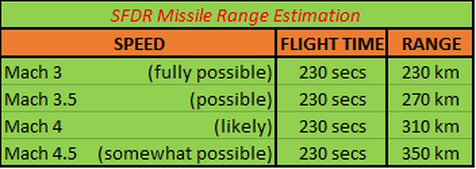An old article from 2018 :
DRDO’S precious ‘Project SFDR’: Connecting the Dots
What we know about SFDR so far?
SFDR, short form for ‘Solid Fuel Ducted Ramjet’ is a propulsion technology different than that of conventional solid fuelled or liquid fuelled missiles. SFDR tech can also be termed as Air Augmented Rockets or Throttleable Ducted Rocket (TDR) or even Variable Flow Ducted Ramjet (VFDR). SFDR tech is currently being employed in Meteor (see Figure 1), a French Active Radar Guided Beyond Visual Range Air-to-Air Missile (BVRAAM) reportedly having a range of 300km, that significantly exceeds the range of any current conventional Air-to-Air missiles (AAM). Realizing what SFDR is capable of, a number of other countries have also started working on this propulsion technology, including India.
View attachment 149885
Figure 1 - Meteor BVRAAM
Why Solid Fuel Ducted Ramjet?
As the name goes, Ramjet is a form of air-breathing jet engine that eliminates the need of oxidizer. A typical rocket or missile, both liquid-fuelled and solid-fuelled have atleast 50 percent of its propellant, mixed with oxidizer, which is important for combustion to generate thrust. The end result being a significantly heavier missile. This is where an air-breathing engine, ‘Ramjet’ in this case, comes in to reduce the weight of the missile by instead taking oxygen from the atmosphere for combustion and significantly increasing the range efficiency of the missile. A Solid Fuel Ducted Ramjet, if employed in an Air to Air Missile, can give a great boost to a country’s airforce superiority.
Analysis of Project SFDR
The news of DRDO developing a Solid Fuel Ducted Ramjet Missile along with Russia (
shown in Figure 2 & 3) have been making rounds ever since second half of the current decade. But still not much is known about it, regarding its range, speed, dimensions, warhead weight etc., since DRDO is tight-lipped on it. Until recently, a schematics of DRDO SFDR has been found inside DRDO issued documents. The design scheme is very similar to that of Meteor BVRAAM with two air ducts, although
DRDO’s 250kg SFDR is around 75kg heavier than 185kg Meteor.
View attachment 149886
Figure 2 - Schematic of DRDO SFDR
View attachment 149887
Figure 3 - 2D view of DRDO SFDR System
Can the range and speed of SFDR missile be figured out?
The answer to this question is fortunately yes, although not accurate, since the
missiles’ actual range capabilities is only known to personnels involved in SFDR development. For finding the approx. range, we have to consider the cutting-edge Lithium Thermal Battery of SFDR (
see Figure 5). DRDO’s SFDR Missile under development incorporates a state-of-the-art Lithium Thermal Battery weighing just 1.4kg which powers up the entire sub-systems of SFDR during its entire flight. The shelf life of Lithium Thermal Battery is highest amongst any kind of battery made in the world so far, with atleast 25 years of shelf life, which will help in lesser maintenance of this missile. The most notable thing in this Lithium Thermal Battery is its discharge duration requirement of
minimum 230 seconds. The battery only gets activated when the missile is launched and its discharge time straightly points towards flight time of approx. 230 seconds. However, the velocity of SFDR still cannot be known unless DRDO officially reveals it, but with approx. 230 seconds flight time, its range can be figured with the help of the following table (
see Figure 4) using different speed possibility. SFDR will guarantee a reach of minimum 250km range and up to 350km range, depending upon altitude and speed. Such range will also guarantee a 100km No-Escape Zone for enemy aircrafts.
Figure 4 - SFDR Missile range estimation through flight time
View attachment 149888
Figure 5 - Lithium Thermal Battery for SFDR BVRAAM
Can a SFDR Missile Variant be used as Anti-AWACS missile?
The famed Russian ULR-BVRAAM (Ultra Long Range - Beyond Visual Range Air-to-Air Missile) a.k.a Anti-AWACS missile, designated as K-100/ Article 172/ KS-172 Novator (
see Figure 6), is the heaviest Air-to-Air missile in the world, standing at 748kg and boasting a range of 400km range with a speed of Mach 3.3. The missile has a conflicting report of whether or not it’s in the inventory of Indian Air Force (IAF). Nevertheless, its fully possible to convert SFDR into a dedicated Anti-AWACS missile with some modifications. An approx. 500kg weight reduction can be achieved from 748 kg weight of KS-172 to 250 kg weight of SFDR, although anti-AWACS variant of SFDR could possibly be slightly heavier. SFDR based missile would give India the capability to target High Value Targets (HVTs) of enemy countries during full-fledged war from a safe distance of 300+ km, which includes AWACS, AEW&C, ASW Aircraft, Transport Aircraft, Refueling Aircraft etc.
Figure 6 - Novator K-100
Conclusion
Maturing of DRDO SFDR missile and its variants is still some years away with Captive Flight Trials (CFTs) hopefully at the end of 2018. Final SFDR Products could differ from the specs provided. The SFDR is indeed a high priority project for DRDO and future requirement for Indian Armed Forces w.r.t evolving threats of India’s unpredictable & unstable neighbors having no respect for India’s sovereignty. The future of missile warfare indeed belongs to air-breathing engines like ramjet, scramjet, shcramjet and pulse detonation engine.
UPDATE
DRDO has successfully test fired an SFDR technology demonstrator missile from Launch Center-III (LC-III) of ITR, Chandipur, Orissa at 12:06 hrs on May 30th using a nozzle-less 450kg booster from ground (
shown in Figure 7). The speed of the missile has exceeded Mach 3 in its debut test for validating the propulsion system. More follow-on tests will be conducted in the near future to validate its active radar seeker, max range, maneuverability, kill probability, electronic counter-measures etc.
View attachment 149889
What we know about SFDR so far? SFDR, short form for ‘Solid Fuel Ducted Ramjet’ is a propulsion technology different than that of conventional solid fuelled or liquid fuelled missiles. SFDR tech...
nmlonline.weebly.com

 www.indiatoday.in
www.indiatoday.in




